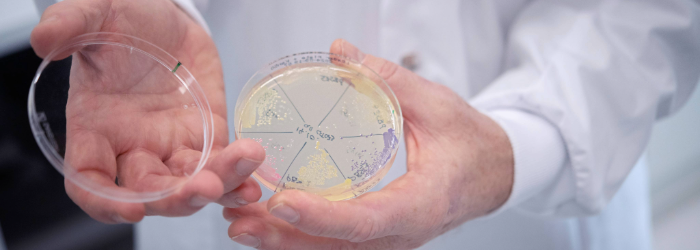Axenic Models
NCCR AntiResist is developing axenic media mimicking the bladder and lung tissue microenvironment as well as deep-seated infections.
Although axenic models can mimic only certain aspects of the tissue environment, they are simpler and thus easier to standardise and scale. They also allow for precise control over experimental variables. This high level of control makes them invaluable for evaluating the effects of drugs in a simplified context.
One of the ways we study the interaction of antibiotics with pathogenic bacteria is by using patient-mimetic axenic cultures in which isolated bacteria are exposed to drugs under controlled environmental conditions. These conditions illuminate critical aspects of in-vivo bacterial physiology.
NCCR AntiResist is currently developing a synthetic human urine (SHU) medium replicating the planktonic growth of Uropathogenic E. coli (UPEC) in human urine. In addition, we are developing a medium which imitates lung epithelial lining fluid (ELF), and a medium mimicking the conditions in S. aureus-infected tissues.
These axenic media, which can be miniaturised and parallelised in different formats, offer great potential for the implementation of high-throughput screening activities, which will allow testing of thousands to millions of compounds.

Similarly to our microtissue models, we are benchmarking our axenic models against clinical specimens and validating them using clinically relevant isolates of target pathogens and standard-of-care antibiotics.
This systematic approach revolutionises the way antibiotic targets have been identified in the past, and we hope to see new avenues for therapeutic treatments for infections in the very near future.
Leaders of Axenic Models
Prof. Sven Panke
Prof. Sven Panke
Research Page »
Prof. Petra Dittrich
Prof. Petra Dittrich
Research Page »




